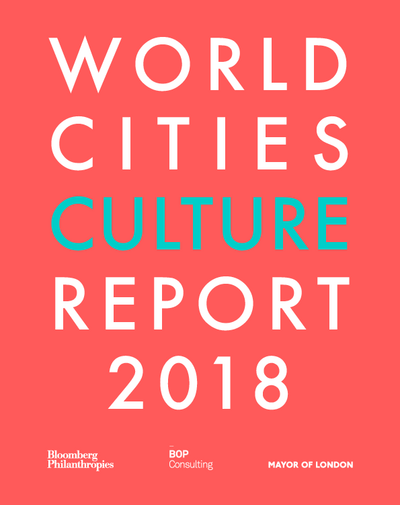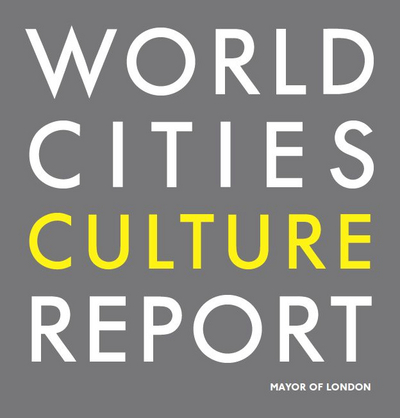World Cities Culture Report 2018
Cultural and city leaders from 32 major global cities around the world came together in San Francisco from the 14th to the 16th November 2018 to show how cities are tackling the issues they face with cultural policies and share best practices. The theme of the conference 2018 was “Culture and New Technologies Transforming World Cities” – looking at the opportunities and challenges facing cities as culture and technology become ever more intertwined. During this summit the participants launched the 2018 World Cities Culture Report. This document is the most comprehensive report on culture and it includes data and examples of transformative cultural projects from 35 major global cities. It highlights that local governments in world cities are responding to global challenges with cultural policies that are open to a greater range of people, practitioners, art forms and new spaces. It outlines the ways in which culture drives regeneration, creates jobs, increases tourism, gives young people positive opportunities and improves health. It will inspire new approaches in every member cities.
The report includes examples of how cities are using culture to respond to universal challenges, such as access to education, social divisions and a rising cost of living:
- In Hong Kong, Rome and Moscow, mobile arts venues and libraries are used to bring culture closer to citizens in every corner of their cities, particularly those areas with traditionally lower engagement with arts and culture
- Projects in Montreal, San Francisco and Melbourne, have been developed in collaboration with, and in recognition of, indigenous populations to celebrate and fully acknowledge the cultures of First Nations
- A number of cities are working with migrants and refugees to provide cultural opportunities to marginalised groups, from supporting refugee artist residencies in Paris to Brussels, where their Cinemaximiliaan project provides a welcome to the city, offering film screenings to refugees in parks, asylum centres and people’s homes
- London has established the world’s first Culture at Risk office – a hot line for venues at risk of closure due to rising rates, increasing development and shifting populations, and has been involved in saving 300 venues, from grassroots music venues to LGBT+ spaces
- Stockholm’s cultural administration has teamed up with media company Consigo on a project called Tactsenze, that enables the visually impaired to learn an instrument, an example of social inclusion through technology
- To respond to the needs of a growing ageing population Amsterdam’s Age Friendly Cultural City programme focuses specifically on cultural provision for the city’s older residents
The report also compiles data which paints a detailed picture of the cultural institutions and resources in each city, such as the number of public libraries, museums, art galleries, live music venues and heritage sites. It shows eg the city with the largest number of:
- Public libraries: Seoul (1,077)
- Museums: Paris (297)
- Visitors to the top five museums: London (25.96m)
- Art Galleries: New York (1,475)
- Percentage of green public space: Oslo (63 per cent)
- Video games arcades: Shenzhen (623)
- Bars: Tokyo (29,358)
This study is linked to the following themes :
International |
Economy

